Are you looking for a cheap tour package to China with over 20 days’ itinerary? Do you want to travel to Tibet on a budget? Are you wondering how to travel to Hong Kong on a budget? If your answers are yes, this 21 days Overland Tibet Budget Tour is a great choice for you. As a leading China travel agency, China Tour Star will manage the most cost-effective tour for you. This tour will start from the metropolis Shanghai, where you will see how much China has developed in recent years. Then through the vast land in Qinghai to the mysterious Tibet. We will arrange a budget Tibet tour but you will see all the highlights there. From Tibet you will travel to Guilin, the place with unique karst landscape. And your tour will end in Hong Kong, where the hustle and bustle scenes will certainly attract you. Stop hesitating and contact us to know more!

Welcome to Shanghai, your first stop. Upon arrival, our local guide will meet you at the airport arrival hall. Shanghai is a center of economy, finance, research, technology, manufacturing, and transportation in China. It is an international metropolis that combines modern and traditional characteristics. It covers an area of 6,340 square kilometers and has a population of about 24,870,900. And your trip will start here. Compared with itineraries provided by other travel agencies, our tour is cost-effective and equally good.
Today, your tour in Shanghai will formally begin. After breakfast, you will go to visit Jade Buddha Temple. In 1882 of Qing Dynasty (1644-1912), an eminent monk Huigen from Mount Wutai, went on a pilgrimage visit to Mount Emei and holy Tibet, got to India and finally reached Burma. He bought five jade Buddha statues with the support of local Chinese and took them back to Mount Wutai. On his way back, he passed by Shanghai, and left two of them here. One is the sitting Buddha and the other is the reclining Buddha. The locals then built a temple called Jade Buddha Temple to keep these two statues together with some other relics. The Jade Buddha Temple covers an area of about 8,856 square meters. The architects of the Jade Buddha Temple inherited the style of the temples of the Song Dynasty (960-1279). On the central axis, there are Hall of Heavenly Kings, Grand Hall, and Jade Buddha Hall. Entering the gate of Jade Buddha Temple, you will feel the peace and quiet of this place. So it’s a good place for you to relax and enjoy some peaceful time.
Next, your tour guide will take you to Yu Garden (closed each Monday). Yu Garden is a private garden built in the Ming Dynasty (1368-1644), which has a history of more than 400 years. Covering an area of about 5 acres, it has many interesting and exquisite spots, for example, Sansui Hall, Wanhua Chamber, Huijing Tower, Dianchun Hall and so on. What’s more, before entering the garden, there is a beautiful spot that you can take some excellent pictures: the Zig Zag Bridge in front of the main entrance of Yu Garden. Just as its name indicates, it has several bends. And there is a type of flower carved at the place of each bend, like narcissus, apricot blossom, peach blossom... The two ends of the bridge are carved with exquisite lotus. When visiting Yu Garden, taking pictures with Zig Zag Bridge as the background will be a nice post on your Facebook.
After that, youwill go to Shanghai Old Street to taste local snacks. It represents Shanghai’s traditional custom and culture. Stepping into the street, you will have a feeling that you are visiting Shanghai’s bustling market of 100 years ago. You can taste some snacks here. Qingtuan (a glutinous rice ball) is a kind of traditional snack in China’s Jiangnan area (the region south of the Yangtze River). Filled with bean paste, and mixed with mugwort juice, it has the fragrance of grass. Meanwhile, you can also taste Guantangbao (juicy stuffed buns). It is famous for its paper-thin skin, large filling, and fresh meat.
After lunch, you will have a visit to Oriental Pearl TV Tower to enjoy the beautiful scenery of Shanghai. Many tour groups choose to go to Shanghai Tower, where visitors can overlook the city. But in Oriental Pearl TV Tower, you can also enjoy excellent scenery, and in the meantime, cost you less. With a height of 467.9 meters, it is composed of steel spheres that are 'strung' vertically through the center. Offering a 360-degree view of Shanghai, its observation deck is the place you will go to and have a panoramic view of the city. The view of the city from this height will fill you with wonder. Remember to take some nice pictures and post them on your social media!
Next, you will go to the Bund. Located on the west bank of Huangpu River (a 113 kilometers-long river running through Shanghai), it is 1,500 meters long. The Bund has 52 colonial-era buildings of different Chinese and Western architectural styles. These buildings are collectively known as Exotic Building Clusters. Besides, there are many buildings that were created by world-class architects, for example, HSBC Building (now it’s where Shanghai Pudong Development Bank is located). It’s the building with the largest coverage area and volume. And the Customs Building, which was built in 1927 is made in imitation of the British Parliament Building. There is a bell tower on top of it, and there is one big bell as well as four small bells in the tower. The four small bells will jingle every 15 minutes. And every 1 hour, a 135 kg sledgehammer will strike the big bell that weighs a few tons, making a majestic sound, which lasts about 10 seconds.
Today, your last stop is Nanjing Road. With a total length of 5.5 kilometers, Nanjing Road comprises two sections, East Nanjing Road and West Nanjing Road. The eastern part is mainly a less-expensive commercial and tourist area while the western part is the most luxurious commercial area in Shanghai. What’s more, there are many time-honored shops. For example, Shendacheng, it was founded in 1875 and has a history of more than 100 years. Selling dim sum and snacks of Shanghai, it is known for its fine material and high quality. You can have a try if you are interested.
After some free time on the Nanjing Road, your tour today will come to an end. Your tour guide will transfer you to the hotel. You can have a good rest for your next destination.


 Xining
Xining Today, our tour guide will escort you to the airport. And you will take the estimated flight MU9925 10:50/14:35 to Xining. Xining is the provincial capital of Qinghai Province, located in the northwest of China. Covering an area of 7,660 square kilometers, Xining has a population of 2,467,965.
 Qinghai Lake
Qinghai Lake After breakfast, you will go to visit Kumbum Monastery. We will drive 28 kilometers southwest for about 35 minutes to get there. As the religious activity center for both monks and followers of Tibetan Buddhism, Kumbum Monastery enjoys a high reputation in China and Southeast Asia. It was built in 1379 and completed in 1577. In its heyday, more than 3,600 monks were living in the monastery and there were more than 80 living Buddhas. And now, there are about 800 monks in the monastery. Covering an area of 143 hectares, it has 52 halls and more than 10,000 buildings. On October 1st, 1949, the 10th Panchen Lama sent a telegram to Chairman Mao Zedong from Kumbum Monastery to congratulate the founding of the People’s Republic of China.
In the afternoon, we will drive 151 kilometers west for about 2.5 hours to Qinghai Lake. Qinghai Lake stands on the Tibetan Plateau, at 3,260 meters above sea level, and covers 4354.28 square kilometers. It is the largest inland lake and the largest saltwater lake in China. The area surrounding Qinghai Lake is vast, with rich water plants and numerous rivers. What’s more, it is an important breeding ground for migration water birds. Due to the high altitude, the weather in Qinghai Lake is very cool. Even in the middle of summer, the average daily temperature is only about 15 degrees Celsius (59 degrees on the Fahrenheit scale). With a fabulous environment, it is really a good place for travelers.
After today’s journey in Xining, you might be tired. We will drive you to the hotel near Qinghai Lake.


 Golmud
Golmud Today, you will spend a day on the road. We will drive about 680 kilometers from Qinghai Lake to Golmud, which will take you about 9 hours. As it will be a long journey, you can take some snacks with you on the vehicle. Besides, along the Xining-Golmud section, you can enjoy the landscapes of mountains, grasslands, salt lakes, Gobi deserts. The splendid scenery along the way will be a feast to your eyes.
 Tuotuo River
Tuotuo River After breakfast, we will drive southwest for about 400 kilometers to Tuotuo River, which will take about 7.5 hours. The Tuotuo River originates from the U-shaped Jianggendiru Glacier at an altitude of over 5,000 meters. At the place where it originates, it is not actually a river, but a shallow stream. This stream nourished by the glacial meltwater only has a width of around three meters and a depth of just 20 centimeters. But this small stream gradually traverses the glacial snow, breaks through the steep gorges, and gathers the valley water. When it leaves the area of the Tanggula Mountains and flows to the riverside of the Qinghai-Tibet Highway, it is already a large river, which is 3 meters deep and 20-60 meters wide. Here, your tour guide will take you to the First Bridge of Yangtze River - the Super Large Bridge along the Qinghai-Tibet Railway with a length of 1,389.6 meters.
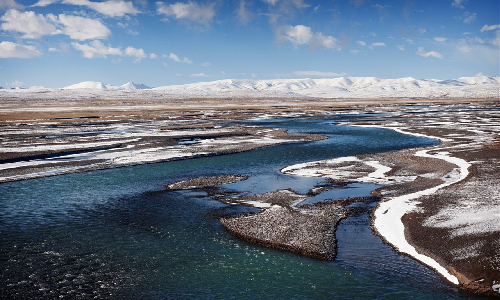
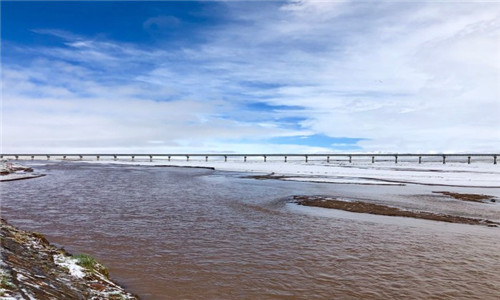
 Nakchu
Nakchu Today we will drive south for about 420 kilometers to Nakchu, which will take around 8 hours. During the journey, you will visit Tanggula Mountain Pass. In the Tibetan language, the name “Tanggula” means the mountain on the plateau. Tanggula Mountain Pass is 5,220 meters above sea level, which is the natural boundary between Qinghai and Tibet. The weather here is unpredictable. Even in summer, the highway here is often blocked by heavy snow. And hail, frost as well as snow are common in this place. Because of the high altitude, the oxygen content here is only 60% of that in the plains, so ordinary passengers passing by the Tanggula Mountain Pass will usually feel sick. So you can take some medicine in advance to overcome the altitude sickness. After arriving in Nakchu, you will be sent to the hotel for a good rest.

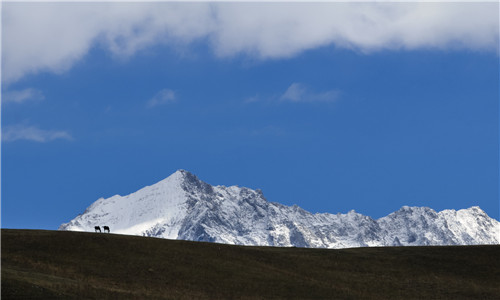
 Lhasa
Lhasa Today, we will take you to Lhasa, which is about 350 kilometers away from Nakchu. We will drive southwest for about 5 hours. Lhasa is the capital of Tibet Autonomous Region in China. Located in the middle of Qinghai-Tibet Plateau with an altitude of 3,650 meters, Lhasa is one of the highest cities in the world. Covering an area of 82.82 square kilometers, it has a population of 867,891. Lhasa is also world-famous for its beautiful scenery, long history, and distinct religious customs. On the way to Lhasa, you will visit Namtso Lake and Yangpachen National Geopark.
During the journey, you will first visit Namtso Lake. It is located in the middle of Tibet. With a length of about 70 kilometers from east to west and a width of about 30 kilometers from north to south, it has an area of about 1,920 square kilometers. It is the second largest lake in Tibet and the third largest saltwater lake in China. The lake surface is 4,718 meters above sea level, and the shape is approximately rectangular. Wild animals such as bears, yaks, donkeys, foxes, and deer often inhabit the waters of Namtso Lake.
Then, we will drive towards the southwest for about 1.5 hours (about 85 kilometers) to visit Yangpachen National Geopark. Situated about 90 kilometers northwest to Lhasa City, this geopark owns many hot water wells and hot springs, and covers an area of about 70 square kilometers. Back in the old days, the crustal movement created the roof of the world (Qinghai-Tibet Plateau), and also created the geothermal resources. The Yangpanchen National Geopark is known as a natural geothermal museum on the Qinghai-Tibet Plateau. Many geological relics and geological landscapes here are rare in the world, and it is a typical area for studying plateau uplift and earth evolution.
After your visit here, we will continue to drive to Lhasa. Upon arrival, your guide will transafer you to the hotel. You can have a nice rest in the hotel. And below are some tips that might be helpful when you travel in Tibet.
1.Plateau reaction
Plateau reaction, also known as plateau sickness or altitude sickness, is a type of plateau sickness. It is a variety of discomfort that occurs when the human body is exposed to low-pressure and low-oxygen environment after entering the plateau above 3,000 meters above sea level, and is a common disease in the plateau area. The best way to avoid and reduce plateau reaction is to take some anti plateau reaction drugs a week before entering the plateau, and in the meantime, keep a good state of mind. After arriving at the plateau area, you should not walk rapidly or run. Generally speaking, for people with strong adaptability to the plateau, the symptoms can be eliminated within 1-2 days.
2.Time to enter Tibet
Every year, from May to September is the peak season of tourism in Tibet, and it is also the best season in Tibet, which is warm and comfortable, with sufficient oxygen and the most beautiful scenery in the year. However, there are also a lot of tourists during this time, and the cost of travel is relatively high. It is the off-season of Tibet tourism every year from November to March. Although it is colder, the scenery of Tibet in winter is also very beautiful, and many people say that Tibet in winter is the real Tibet.
3.Sun protection and clothes
The sunshine in Tibet is abundant, the ultraviolet rays are strong. The total sunshine time is more than 3,000 hours per year, so you should pay attention to the sun protection to avoid sunburn. Make sure you take sunscreen, sunglasses, hats… The temperature difference between day and night in Tibet is big. In summer, the temperature is about 20 degrees during the day, but only about 10 degrees at night. Please take enough warm clothes like jackets and down coats even when you are travelling here in Summer.
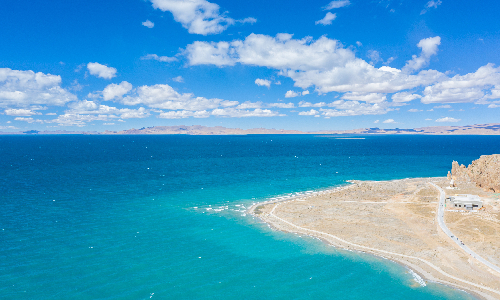
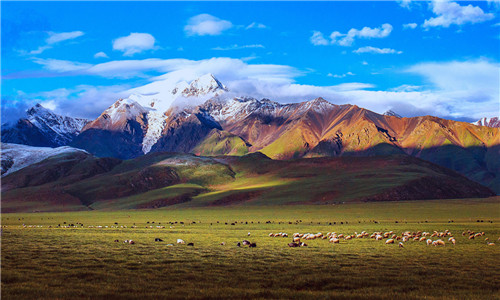
Today, your trip in Lhasa begins. After breakfast, you will visit Potala Palace. Located in the center of Lhasa, Potala Palace is honored as the highest palace in the world with an elevation of 3,767.19 meters. This grand palace covers an area of 360,000 square meters. It is 177.19 meters high and 360 meters long from east to west. It is a splendid palace integrating the architecture styles of palaces, castles, mausoleums and temples. Interesting legend has it that there is an underground palace in Potala Palace. It is said that the underground palace is just like a maze and there are various treasures hidden. So, is there really an underground palace? According to a professional, there is actually no such place. The underground palace that the legend refers to is the foundation of Potala Place. As the north side of the mountain where Potala Palace locates is high and the south side is low, it was necessary to build a complex foundation to level up the ground and then carry out construction works on it. Thus, a deep and complex underground foundation was formed.
In the afternoon, you will visit Jokhang Temple first. With a history of more than 1,300 years, the Jokhang Temple is the ultimate pilgrimage destination for Tibetan pilgrims. The Jokhang Temple was built in the heyday of the Tang Dynasty in the year 647. According to legend, it was built to enshrine a Buddha statue of 8-year-old Sakyamuni. The Buddha statue was brought from Kathmandu by the Nepalese Princess Chizun who was married to the Tubo king Songtsen Gambo. Later, the temple experienced generational expansion and currently covers an area of over 25,100 square meters. It is worth mentioning that what is now enshrined in Jokhang Temple is the statue of 12-year-old Sakyamuni brought by Princess Wencheng from Chang’an of the Tang Dynasty (618-907). The 8-year-old statue was destroyed in wars.
Stepping out of Jokhang Temple, you will go to Barkhor Street as your next stop. Located in the old area of Lhasa, it is an ancient round street and the best-preserved street in Lhasa. Starting at the main gate of the Jokhang Temple, it has a total length of about 1,500 meters. During the Songtsan Gambo period in the 7th century AD, the construction of the Jokhang Temple began, and craftsmen built some houses around it as temporary residence. This residential area is probably the earliest prototype of Barkhor Street. Varied shops stand on this street. Most of them offer the long-sleeve ‘chuba’ (the Tibetan people's traditional clothes), Tibetan knives and some religious articles for sale. Barkhor Street is the most famous small commodity street in Lhasa, where you can spend a long time and buy some souvenirs.

Today we will continue our tour in Lhasa. After breakfast, we will visit Tibet Museum (closed each Monday) located in the southeast corner of Norbulingka Park. It covers an area of 53,959 square meters. Built in 1999, Tibet Museum is the first large and modern museum within the Tibet Autonomous Region. Its exhibition hall is composed of four parts: prehistoric culture, indivisible history, culture and art, and folk culture. The first two parts reveal that Tibet has been an inseparable part of China since ancient times. And the last two parts show the history and culture of Tibet. If you want to know more about Tibet, just go to Tibet Museum.
In the afternoon, we will go to Sera Monastery situated in the northern suburb of Lhasa. Sera Monastery is one of three famous monasteries in the city along with the Drepung Monastery and the Ganden Monastery. Tens of thousands of Vajra Buddha statues are preserved in the Sera Monastery, most of which were made locally in Tibet. Besides, there are also many bronze Buddha statues brought from mainland China or India. If lucky, you can see Debating of Buddhist Doctrines, which is a discussion of Buddhist knowledge. In such a battle of words, they supplement their efforts by using a variety of gestures. For example, they high five to urge others to answer questions as quickly as possible. The debating traditions in the Sera Monastery are unique among the three famous monasteries in Lhasa.
Your next stop is Norbulingka Park situated in the western suburb of Lhasa. As a classical Tibetan-style park, it is also the place where Dalai Lamas spent the summer and dealt with political affairs. Built in the 1740s, this park covers an area of 360,000 square meters and has more than 100 kinds of plants. Here, you can appreciate various kinds of plants. There are not only common flowers and trees in Lhasa, but also exotic flowers and grass from the Himalayas, as well as rare flowers transplanted from the mainland of China or abroad. It can be said that Norbulingka Park is a botanical garden on the plateau.
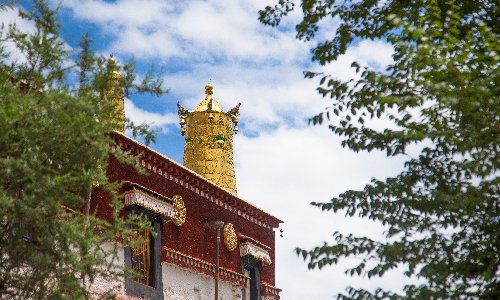
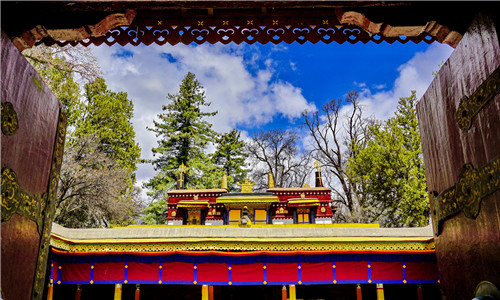
 Gyangtse
Gyangtse In the morning, we will drive southwest for about 5 hours to Gyangtse, 260 kilometers away from Lhasa. During the trip, you will have a glimpse of Yamdrok Yumtso Lake. It is the fifth largest lake in Tibet and one of Tibet’s three holy lakes. Yamdrok Yumtso Lake, about 70 kilometers south of Lhasa, covers an area of 678 square kilometers. The lake is at an altitude of 4,441 meters, with an average depth of over 30 meters, and the deepest point is 60 meters. Upon your arrival at Gyangtse, you will be transferred to the hotel for a good rest.
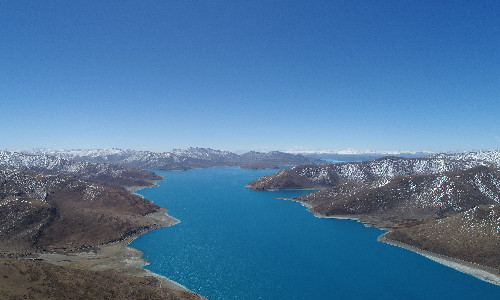
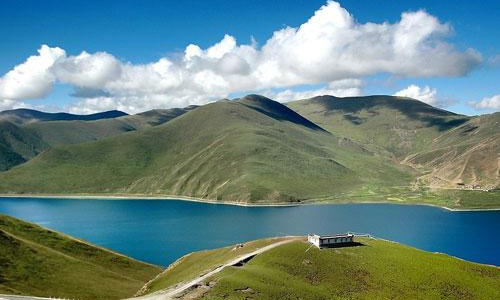
 Shigatse
Shigatse After breakfast, you will visit Pelkor Monastery in Gyangtse. Pelkor Monastery was built in 1427 and it took 10 years to complete its construction. In Pelkor Monastery, there is a well-known Pelkor Pagoda at home and abroad. As the most majestic and beautiful architectural treasure, it is the best-preserved pagoda in Tibet. With 9 stories, Pelkor Pagoda is 42.4 meters high. It is not an ordinary pagoda, because it was built from nearly a hundred Buddhist halls one by one. It is also named “Ten Thousand Buddha Pagoda” as more than ten thousand figures of Buddha are painted inside. There are also over a thousand clay, copper, and gold statues of Buddha in the pagoda, so people also call it “the Museum of Buddha Statues”.
In the afternoon, we will drive northwest for about 2 hours to Shigatse, about 95 kilometers away from Pelkor Monastery. As soon as you arrive in Shigatse, you will visit Tashilunpo Monastery at the foot of Niseri Mountain. Tashilunpo Monastery was built on the hillside. It covers an area of 150,000 square meters, surrounded by palace walls whose circumference is more than 3,000 meters. And there are 57 sutra halls and 3,600 houses in this monastery. One interesting thing about Tashilunpo Monastery is that many unowned dogs gather here. It is said that these are released dogs. When you come here, you will see that they bask in the sun leisurely and get along very well with people.
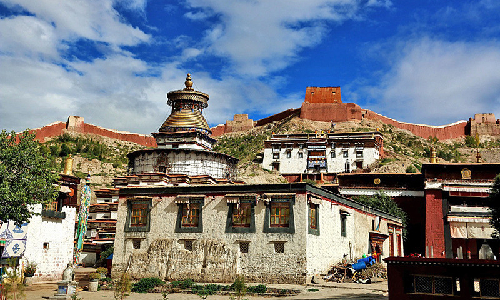

 Lhasa
Lhasa Today we will return to Lhasa, about 273 kilometers away from Shigatse. We will drive northeast for 5 hours. On the way to Lhasa, we will visit a local Tibetan family. Through talking to the local people and visiting their houses, you will learn more about Tibetans and their lifestyles. For example, you will learn about their eating habit, etiquette and so on.
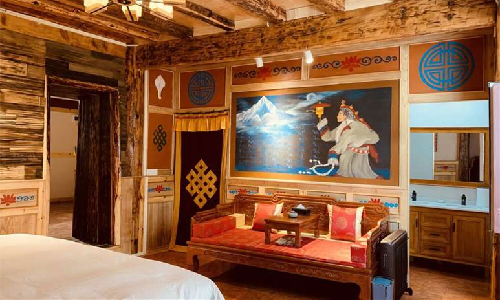

 Chengdu
Chengdu After breakfast, our tour guide will meet you at the hotel lobby. Then you will be transferred to the airport to take the estimated flight CA4402 10:15/12:20 to Chengdu. As the capital of Sichuan Province, Chengdu covers an area of 14,335 square kilometers. As of November 1, 2020, Chengdu has a population of 20,937,800. The afternoon and evening are your free time to explore the city. Thanks to these free activities, despite your budget is limitedEven with limited budget, you can explore and admire the charm of Chengdu.
After breakfast, you will visit lovely giant pandas in Chengdu Research Base of Giant Panda Breeding. Chengdu Research Base of Giant Panda Breeding was established in 1987, and it covers an area of 560 acres. It has various facilities for giant panda breeding and is the world’s largest scientific research institution for giant panda breeding. Besides, it is a comprehensive base integrated with conservation education, scientific research, and educational tourism. All in all, if you want to see pandas, this is the place to go. For giant pandas, bamboo is their favorite food. In the wild, except for sleeping or short-distance activities, giant pandas usually spend 14 hours eating every day. An adult giant panda can eat 40 kilograms of food a day. Those pandas in the base are much happier. Their three meals a day are rationed by nutritionists with milk, eggs, fresh fruits, and bamboo. You can observe these cute creatures more when you visit the base! You can take a few selfies with them and post the pictures on your social media.
In the afternoon, you will go to People’s Park. Built in 1911, the park covers a total area of 112,639 square meters. It is a comprehensive park which integrates heritage preservation with entertainment. A tea table with a height of about half a foot, a large bamboo-backed tea chair and a cup of tea are the things needed for a local in Chengdu to have a leisurely afternoon. You can try to blend in the local life by ordering a cup of tea in the Heming Tea House in the park. Heming Tea House is the liveliest place in People’s Park. In the Heming Tea HouseIf you can speak some Chinese, you will see that the locals here talk about all kinds of things, from anecdotes to international affairs.
Then you will continue your trip to visit Wuhou Temple. Covering an area of 150,000 square meters, it was built in 221. Wuhou Temple is dedicated to Zhuge Liang, the Marquis Wu (Wuhou in Chinese) of the Kingdom of Shu in the Three Kingdoms Period (220-280). The gate of Wuhou Temple has a plaque that reads “Zhaolie Temple of Shu Kingdom”. Zhaolie is the posthumous title of Liu Bei (the person that founded the Kingdom of Shu in the Three Kingdoms period).“Emperor Zhaolie” is the posthumous title of Liu Bei (the person founded the state of Shu Han in the Three Kingdoms period). The plaque indicates that this is a temple used to commemorate Liu Bei. But people usually call it “Wuhou Temple”. It shows Zhuge Liang’s prestige status and people’s respect for him. If you are interested in the history and stories of the Three Kingdoms, there is a Three Kingdoms Culture Exhibition Area for you to visit.
Then, Jinli Street will be your next stop. With a length of 550 meters, Jinli Street is an ancient commercial street in Chengdu. It is recorded that as early as the Qin Dynasty (221BC-206), Jinli Street was the most famous place for baldachin - a rich, ornate cloth. And it was one of the busiest commercial areas during the Shu Kingdom (221BC-263). Hence, it is known as “First Street of the Shu Kingdom”. What’s more, on this street, the life in modern Chengdu is shown: there are tea houses, restaurants, bars, snacks, handicrafts and so on. All these fully demonstrate the unique charm of Chengdu.

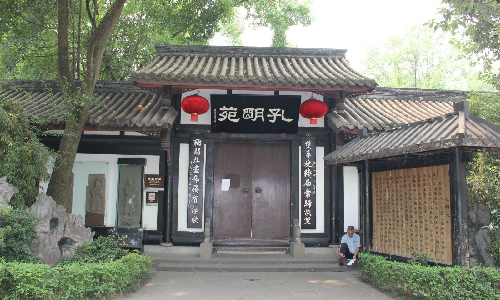
 Guilin
Guilin After breakfast, our tour guide will escort you to the railway station for the estimated high-speed train D1801 09:10/10:55 to Guilin. Our local guide will meet you there. Guilin is a world-famous tourist city. It covers a total area of 27,800 square kilometers, and has a population of 4.93 million.
 Yangshuo
Yangshuo Guilin
Guilin After breakfast, you will go to Mopanshan port to enjoy Li River Cruise. To get there, we need to drive southeast for about 36 kilometers, which will take about one hour. During the journey on the ship, you will enjoy the landscape of the Li River (a river flows 83 kilometers from Guilin to Yangshuo). It is absolutely the safest and most popular way to admire the beautiful scenery of the Li River. Your lunch will be included on the ship, and you can eat while enjoying the scenery.
After disembarkation in the afternoon, we will take you to Yangshuo West Street. Yangshuo West Street is a pedestrian street in Yangshuo County. Located at the center of Yangshuo County, it is about 8 meters wide and 800 meters long. With a history of more than 1,400 years, it is the oldest and most prosperous street and one of the important tourist attractions in Yangshuo. Leaders of more than 150 countries have visited here. This street is given a name of “foreigners’ street” because sometimes the foreigners here outnumber Chinese. Don't be surprised if you hear English words spoken by elderly Chinese, for this street is also called “the global street”. Besides, you will be tempted by the local food here, for example Guilin rice noodles. It is a traditional type of food in Guilin. It is made from indica rice and brine. And it attracts diners from all over the world because of its special taste.
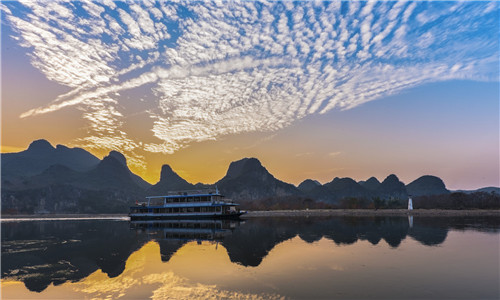
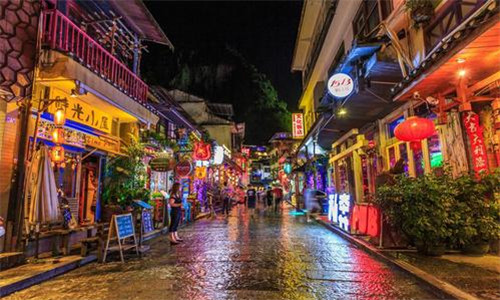
 Hong Kong
Hong Kong Today, you will leave Guilin. Your tour guide will escort you to the railway station for a high-speed train G319 12:38/15:57 to Hong Kong. Situated on the southeast coast of China, Hong Kong is made up of four parts: Hong Kong Island, Kowloon Peninsula, the New Territories, and the Outlying Islands. With a total land area of 1,106.66 square kilometers and a sea area of 1,648.69 square kilometers, Hong Kong has a population of 7,474,200. In addition, Hong Kong is known as the Pearl of the Orient, a gourmet paradise and also a shopping paradise.
Today, we will arrange a half-day itinerary for you, and the afternoon is your free time to explore this city. Our half-day tour is a great way to save time and money. After breakfast, you will go to Victoria Peak, which has now become the best spot to see Hong Kong and Victoria Harbor. To give you a more interesting experience, we will arrange the Peak Tram for you to get to the top of the peak. Sitting in the tram, you couldn’t help leaning backward, because the track is with a gradient up to 25.7 degrees. The tall buildings and dense bushes seem to have fallen aside, and it feels amazing. Your journey aboard the tram will take about eight minutes and upon reaching the summit you will see the serene scenery of Victoria Harbor and Hong Kong Island. When you arrive at the peak, you will find a shopping center named Peak Tower. You can buy some souvenirs for your family and friends here. There’s an interesting place here that you can make an appointment to send out post cards at any time of the year.
Then, you will go to Repulse Bay. Its name comes from a 19th century battle in which the British army repulsed pirates. It is known as “The Best Bay in the World”, as well as having the reputation for being the “Oriental Hawaii”. Located in the south of Hong Kong Island, it has long and wide beaches as well as calm waves. It is a famous attraction for people to spend the summer because it is warm in winter and cool in summer there. Besides, Repulse Bay is a luxurious residential area for dining, and aquatic activities.
Your last stop today is Stanley Market. There are various shops and restaurants in the market. The shops here mainly sell souvenirs, handicrafts, antiques, ready-made clothes, bags and leather products, jewelry, etc. If shopping is not what you like, you can go to the restaurants or bars by the coast, choose a window seat, drink a glass of beer or eat some food, and listen to the sound of the waves. In general, Stanley Market is one of the must-go places for tourists. From Stanley Market, your tour guide will transfer you back to the hotel.


Tomorrow, you will leave China. We will not arrange itineraries for you today, and you are free to explore the city on your own. Here are some suggestions for you.
In the daytime, you can go to Wong Tai Sin Temple. It is a Chinese Taoist temple and one of the most popular temples in Hong Kong. Wong Tai Sin Temple is named after Wong Taisin (a famous Taoist representative). When he was fifteen years old, he began to follow Taoism. Forty years later, he achieved enlightenment and became immortal. It is said that he punishes evils, heals the wounded, and rescues the dying. His influence spread among the local people. With his mercy and his power, he is said to grant whatever is requested. Therefore, many people who visit the temple come to pray for different things and have their fortunes told.
Besides, you can also go to Lamma Island. Have you heard of the famous movie star Zhou Runfa (Chow Yun-fat)? Lama Island is his birthplace. This island is the third largest island in Hong Kong. Since it is near the city, it’s a good place for people to relax on weekends and holidays. The fresh air, beautiful coastal scenery, pure natural environment, peaceful folk customs, delicious seafood, etc., all these elements add charm to this small island and attract tourists. Out of love for this small island, many urban residents and foreigners have migrated here and established a non-indigenous community. There are no tall buildings on the island, just many bungalows.
In the evening, you can go to Lan Kwai Fong to have a drink. Lan Kwai Fong is a characteristic tourist attraction in Hong Kong, located in the Central District of Hong Kong Island. It originated in the early 1970s. At that time, an Italian businessman opened a restaurant here. Some “Yuppies” who worked nearby wanted to find a place to chat after getting off work. So this restaurant became their gathering place. Since then, Lan Kwai Fong has gradually become a gathering place for those seeking for recreation. Later, more and more bars, clubs, restaurants, and entertainment venues appeared, it grew to the size you see today. Lan Kwai Fong is the most bustling at night and is always filled with young people. If you want to experience the night life in Hong Kong, this is a nice place to go!
If you like shopping, you can go to Lady’s Street. The street is about one-kilometer long and sells all kinds of smallwares. It has become the most famous shopping street and a must-see tourist attraction in Hong Kong. If you think that only women go shopping at Ladies Market, you are wrong. Ladies’ Street got its name because the shops here mainly sell women’s clothing and supplies in the early days. However, now this one-kilometer long open-air market with more than a hundred stalls also sells men’s clothing, leather bags, jewelry, toys, cosmetics, and even household items. It is a famous place for tourists and even local people to buy clothes and souvenirs at a low price.
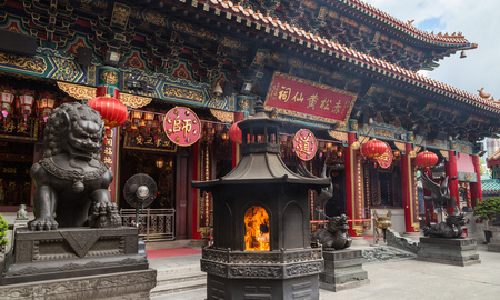

Today, your 21 days’ Overland Tibet Budget Tour will come to the end.It’s time to say goodbye. After breakfast, you will have enough time to pack your luggage. Please bring your luggage to the lobby of the hotel on time. Later, your tour guide will escort you to the airport for taking your flight. Welcome to China again!
Author: Li Jiaqi
Proofreader: Li Yiwen
| City | Five Star hotel list | Four Star hotel list |
|---|---|---|
| Shanghai | Ocean Hotel Shanghai | Ambassador Hotel |
| Xining | Sofitel Xining | Holiday Inn Xining Hot-Spring |
| Qinghai Lake | Guest Hotel | Guest Hotel |
| Golmud | Guest Hotel | Guest Hotel |
| Tuotuo River | Guest Hotel | Guest Hotel |
| Nakchu | Guest Hotel | Guest Hotel |
| Lhasa | Shangri-La Hotel, Lhasa | Thangka hotel |
| Gyangtse | Guest Hotel | Guest Hotel |
| Shigatse | Qomo Langzong Hotel | Shandong Building |
| Chengdu | Sofitel Chengdu Taihe | Holiday Inn Express Chengdu Jinniu |
| Guilin | Lijiang Waterfall Hotel | Guilin Bravo Hotel |
| Hong Kong | Harbour Grand Kowloon | Harbour Plaza North Point Hotel |
 |
![]() About your child or infant, please contact us for a discounted price.
About your child or infant, please contact us for a discounted price.



We started with a few days in Beijing & ended in Shanghai, from where we visited the Forbidden City and Great Wall. In between we visited Terra Cotta Warriors Museum, Panda Base, Shanghai Disneyland.

We had a wonderful holiday in China which will remain long in the memory. China is a breathtakingly beautiful country full of splendid temples and palaces, mountains and rivers, peaceful rural scenes and bustling shopping streets.
 QUICK ENQUIRY
QUICK ENQUIRY